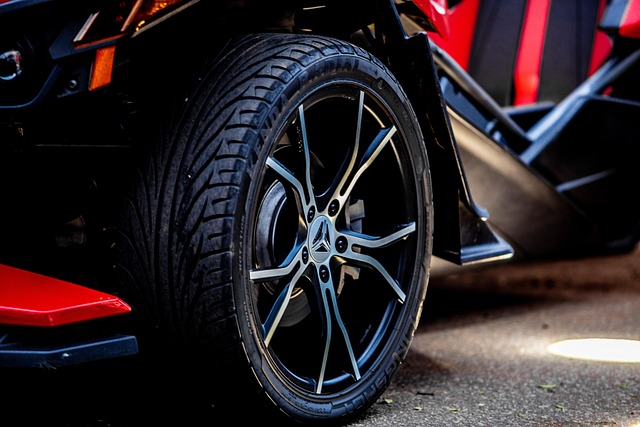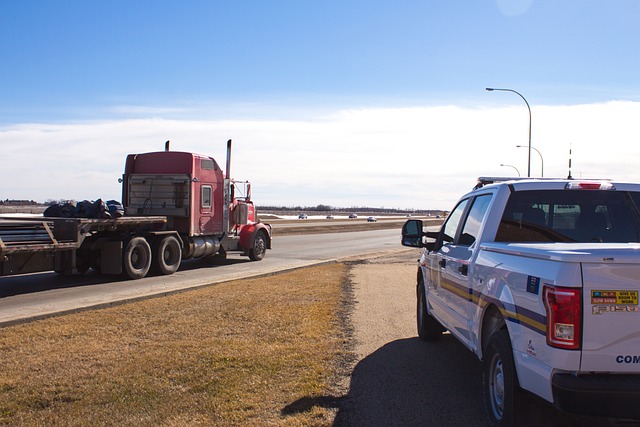Looking to register your car in California? This comprehensive guide walks you through every step, from understanding eligibility requirements to completing the DMV vehicle identification number (DMV VIN) verification. We’ll also detail gathering necessary documents, the online or in-person registration process, and paying fees. By following these straightforward steps, you’ll have a smoothly registered vehicle in no time.
- Understand Eligibility Requirements for Registration
- Gather Necessary Documents for Car Registration
- Perform DMV Vehicle Identification Number (VIN) Verification
- Complete Online or In-Person Registration Process
- Pay Registration Fees and Receive Your License Plate
Understand Eligibility Requirements for Registration

Before you begin the registration process, it’s crucial to understand the eligibility requirements set by the California Department of Motor Vehicles (DMV). To register your vehicle, you must first ensure that your car meets all state and federal safety standards. The DMV conducts a thorough vin inspection to verify the vehicle identification number (VIN), checking for any recalls or outstanding issues. This process is often streamlined with the use of a mobile vin verifier, which can provide real-time data on the vehicle’s history, including its previous ownership and maintenance records.
Additionally, your vehicle must be insured, and you’ll need to provide proof of insurance when registering. The DMV also requires you to present valid identification documents, such as a driver’s license or passport. It’s essential to gather all necessary paperwork and ensure your car is in compliance with California’s registration guidelines to avoid any delays during the registration process.
Gather Necessary Documents for Car Registration

Before you begin the car registration process in California, ensure you gather all the essential documents. This includes your vehicle’s registration certificate from the previous state, a valid driver’s license, proof of insurance, and the most crucial document—the Vehicle Identification Number (VIN) verification report. The DMV (Department of Motor Vehicles) requires a VIN inspection to ensure the vehicle’s authenticity.
For a seamless experience, consider conducting a mobile VIN verification process, which allows you to obtain a digital copy of your car’s history. This service provides valuable insights into any previous accidents, mechanical issues, or potential red flags associated with the vehicle. Alternatively, you can opt for a traditional VIN inspection at a designated center, ensuring all documents are in order before submitting them to the DMV.
Perform DMV Vehicle Identification Number (VIN) Verification

Before you can register your car in California, you’ll need to ensure that it meets all safety and emission standards. One crucial step in this process is performing a DMV Vehicle Identification Number (VIN) verification. This involves checking the vehicle’s history through the Department of Motor Vehicles (DMV) to confirm its authenticity and compliance with local regulations. You can do this by presenting your car for inspection at a designated DMV location or, for added convenience, opt for a mobile vin inspection.
The dmv vin verification process is designed to ensure that your vehicle doesn’t have any outstanding issues, such as unpaid fines or recall notices. It also helps in identifying potential fraud or tampering. If your car passes the inspection, you’ll receive the necessary documentation to proceed with registration. Should any discrepancies be found during the vin inspection, you’ll be guided on how to resolve them before completing the registration process.
Complete Online or In-Person Registration Process

In California, registering your car involves a straightforward process that can be completed either online or in-person at a Department of Motor Vehicles (DMV) office. The first step is to gather all necessary documents, including proof of ownership, vehicle identification number (VIN) verification, and any required forms. For a smooth experience, many opt for the convenient online registration method, which allows you to submit applications, pay fees, and even schedule a DMV visit virtually. If you prefer a more traditional approach or have specific requirements, visiting a local DMV remains an option where staff can assist with any questions regarding VIN verification or other necessary inspections using a mobile vin verifier.
Once your documents are in order, you’ll need to pass the required inspections. This typically includes a vehicle safety inspection and a emissions test. The latter is crucial for ensuring your car meets environmental standards. After successfully completing these checks, including a DMV vin inspection if needed, you can proceed with registration. Both online and mobile vin inspection tools can streamline this process, making it efficient and accessible for all California residents.
Pay Registration Fees and Receive Your License Plate

After completing your vehicle’s registration application at the DMV, it’s time to settle the fees. The cost of registering a car in California varies depending on several factors, including the type of vehicle and its age. You can pay online or in person at any DMV office using cash, check, or debit/credit cards. Once the payment is processed, you’ll receive your registration documents, along with an official Vehicle Identification Number (VIN) inspection report. This document verifies that your car meets all safety standards required by California.
With your registration papers in hand, it’s now possible to obtain license plates for your vehicle. The DMV will issue a set of plates based on the information provided during the registration process and the data found on your VIN. In some cases, especially when dealing with specialized or vintage vehicles, you might require additional documents or inspections. A mobile VIN verifier can be helpful in such scenarios as it allows for remote inspection and verification, saving time and effort compared to a traditional visit to a DMV office.
Registering a car in California is a straightforward process, but it requires careful preparation. By understanding the eligibility requirements, gathering all necessary documents, including proof of ownership and insurance, and successfully completing either the online or in-person registration process with a valid DMV VIN verification, you’ll have your vehicle registered and on the road in no time. Remember to pay the required fees and receive your license plate to legally operate your car within the state.



